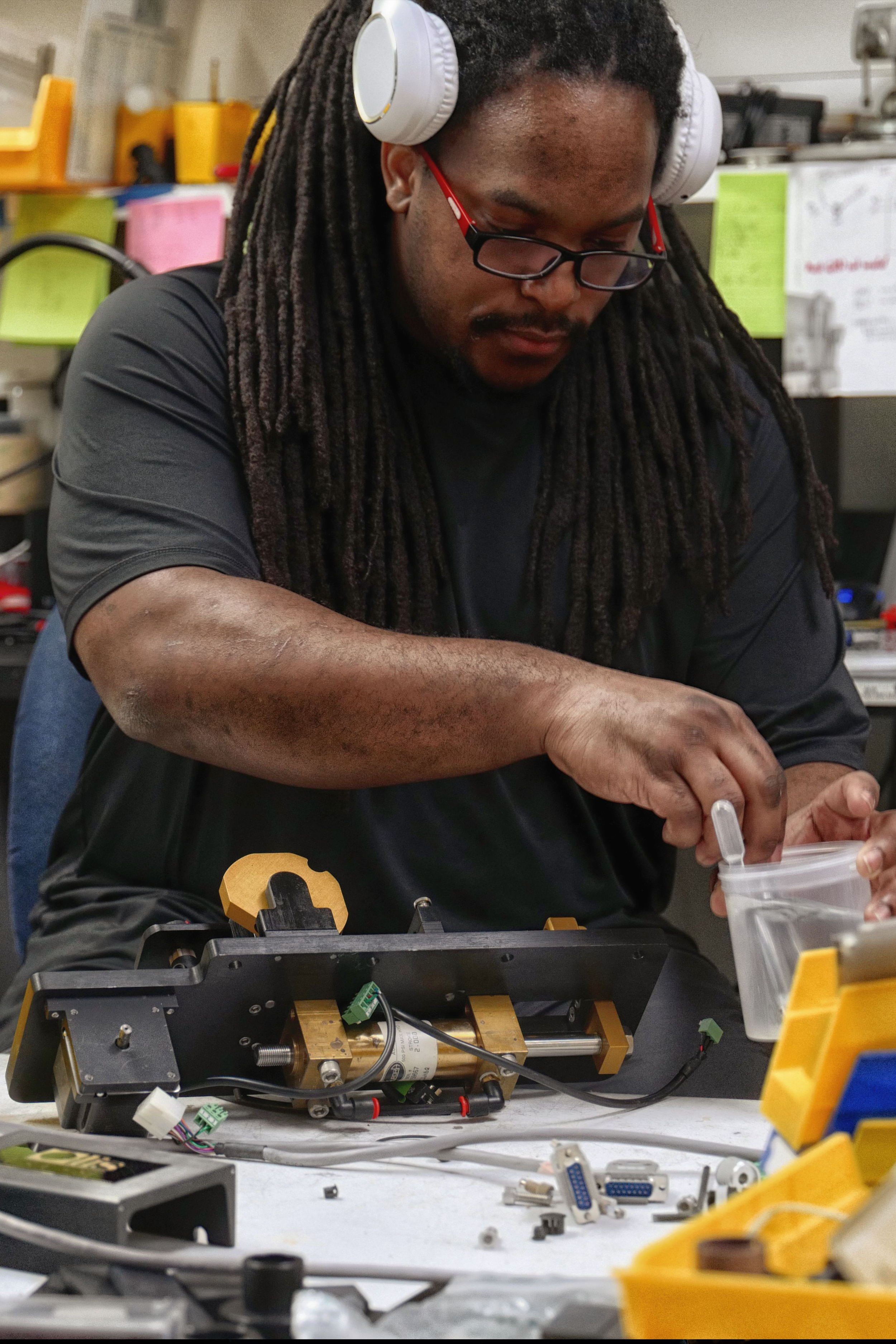More About Spectrophotometers
More About Spectrophotometers
Blog Article
Facts About Uv/vis Uncovered
Table of ContentsThe Main Principles Of Circularly Polarized Luminescence Some Known Factual Statements About Circular Dichroism Getting My Uv/vis/nir To WorkAn Unbiased View of Uv/vis/nirThe Facts About Circular Dichroism Uncovered

Spectrophotometry is a tool that hinges on the quantitative analysis of particles depending on how much light is absorbed by colored substances.
Little Known Questions About Uv/vis.
A spectrophotometer is frequently utilized for the measurement of transmittance or reflectance of solutions, transparent or nontransparent solids, such as refined glass, or gases. Although numerous biochemicals are colored, as in, they absorb noticeable light and for that reason can be determined by colorimetric procedures, even colorless biochemicals can frequently be converted to colored compounds ideal for chromogenic color-forming responses to yield compounds suitable for colorimetric analysis.: 65 Nevertheless, they can likewise be created to measure the diffusivity on any of the noted light ranges that normally cover around 2002500 nm using various controls and calibrations.
An example of an experiment in which spectrophotometry is used is the determination of the stability constant of an option. A particular chemical reaction within a solution might happen in a forward and reverse direction, where reactants form items and products break down into reactants. Eventually, this chemical reaction will reach a point of balance called a balance point.
What Does Uv/vis Mean?
The amount of light that passes through the option is indicative of the concentration of certain chemicals that do not enable light to pass through. The absorption of light is because of the interaction of light with the electronic and vibrational modes of molecules. Each kind of molecule has a private set of energy levels associated with the makeup of its chemical bonds and nuclei and hence will absorb light of specific wavelengths, or energies, resulting in unique spectral residential or commercial properties.
The usage of spectrophotometers spans various scientific fields, such as physics, products science, chemistry, biochemistry. circular dichroism, chemical engineering, and molecular biology. They are extensively used in lots of industries consisting of semiconductors, laser and optical manufacturing, printing and forensic assessment, as well as in labs for the research study of chemical substances. Spectrophotometry is often used in measurements of enzyme activities, determinations of protein concentrations, decisions of enzymatic kinetic constants, and measurements of ligand binding reactions.: 65 Eventually, a spectrophotometer is able to identify, depending upon the control or calibration, what compounds are present in a target and exactly just how much through calculations of observed wavelengths.
Invented by Arnold O. Beckman in 1940 [], the spectrophotometer was produced with the help of his associates at his company National Technical Laboratories founded in 1935 which would become Beckman Instrument Company and eventually Beckman Coulter. This would come as a service to the formerly developed spectrophotometers which were not able to take in the ultraviolet correctly.
5 Simple Techniques For Spectrophotometers
It would be found that this did not provide satisfying results, for that reason in Design B, there was a shift from a glass to a quartz prism which permitted for much better absorbance outcomes - circularly polarized luminescence (https://www.quora.com/profile/Julie-Ann-DeSa-Lorenz). From there, Design C was born with a modification to the wavelength resolution which ended up having 3 systems of it produced
It was produced from 1941 to 1976 where the price for it in 1941 was US$723 (far-UV devices were a choice at additional cost). In the words of Nobel chemistry laureate Bruce Merrifield, it was "most likely the most crucial instrument ever established towards the improvement of bioscience." Once it became discontinued in 1976, Hewlett-Packard developed the first commercially readily available diode-array spectrophotometer in 1979 called the HP 8450A. It irradiates the sample with polychromatic light which the sample absorbs depending upon its homes. It is transferred back by grating the photodiode range which detects the wavelength area of the spectrum. Ever since, the production and execution of spectrophotometry gadgets has actually increased tremendously and has actually ended up being one of the most ingenious instruments of our time.

Some Known Questions About Circular Dichroism.
The grating can either be movable or fixed.
In such systems, the grating is repaired and the strength of each wavelength of light is measured by a different detector in the array. In addition, most contemporary mid-infrared spectrophotometers utilize a Fourier transform technique to get the spectral information - https://dzone.com/users/5082179/olisclarity1.html. This technique is called Fourier change infrared spectroscopy. When making transmission measurements, the spectrophotometer quantitatively compares the YOURURL.com fraction of light that passes through a referral service and a test option, then digitally compares the strengths of the 2 signals and calculates the percentage of transmission of the sample compared to the reference requirement.

Report this page